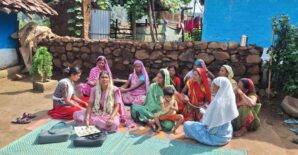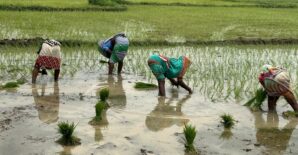 Paul Krugman, while writing on Covid-19 pandemic in the New York Times, suggested three principles in economic policy. First, focus on hardship, not GDP. Second, stop worrying about incentives to work. Third, do not trust Trump. The last one is probably not applicable to us, but the first two have substantive implications for coping strategies with this pandemic.
Paul Krugman, while writing on Covid-19 pandemic in the New York Times, suggested three principles in economic policy. First, focus on hardship, not GDP. Second, stop worrying about incentives to work. Third, do not trust Trump. The last one is probably not applicable to us, but the first two have substantive implications for coping strategies with this pandemic.
The nature of Covid-19 is peculiar. Some unemployment will be desirable to flatten the curve of disease progression. Malls, restaurants and other business establishments by not operating can help. Yet, sooner or later the economy will go into a free fall. Laid-off workers particularly the daily wage workers comprising many seasonal migrants (9 million annually—139 million total based on census 2011; Ahmedabad, a city of 6 million has nearly 1.7 million seasonal migrants) will struggle to find employment.
The coronavirus-related layoffs will disproportionately hit service workers in typically lower-paying jobs in fields like retail, hospitality. These workers lack adequate savings and are likely to not know where to go as restaurants, malls, cafes and shops across the country shut their doors indefinitely. A bigger problem is that no one knows how long it will last, creating uncertainty. The preface for social protection is right here. The response needs to strike a balance between minimising damage to people through social protection and to the economy through whatever stimulus possible. Yet, in this crisis, the biggest safety net is a functioning market for food.
Social protection aims to help the poor and vulnerable during the times of calamity, disaster and crisis. Covid-19 is a calamity, that too of unprecedented nature. This article focuses on food-based social safety nets engendered in response to Covid-19 by both the central and the state governments. The central government decided on free distribution of 5kg rice or wheat per person and 1kg pulses/household under PM Garib Kalyan Ann Yojana for the next three months to 80 crore National food security Act (NFSA) beneficiaries. Under NFSA, households usually get 5kg food grains per person at subsidised rates (wheat at Rs 2/kg, rice at Rs 3/kg and coarse cereals at Rs 1/kg. To palliate the hardship under Covid-19, beneficiaries will also get supplementary free ration beyond their monthly quota, which has been increased to 7 Kg/month for the next three months.
Kerala, Punjab and Delhi are coming up with modified packages. One change that is proposed is distributing ration for six months in one go. Delhi announced a 50% increase in PDS rations for 7 million people. In Odisha, three months of PDS ration would be provided to nearly 5 million beneficiaries. The PDS rations will be delivered to the doorstep for the elderly.
Critical as these measures are as a safety net, at the end of the day, they cannot supersede the market. Only when the markets are running, the safety nets would be useful. PDS has low uptake in urban areas catering to only 50% of the population. These households would have to rely on markets. Further, the food demand comprises more than rice and wheat and contains a variety of essential food products such as edible oil where markets need to deliver. Reports show that wheat provided to the PDS beneficiaries is of little use since the local flour miller (chakki) shops are not operating because of the lockdown. Similarly, import-oriented essential commodities such as edible oils will likely face supply constraints leading to price spikes.
The design of the social safety net should also be a function of the pandemic itself. The country sits on a mountain of food grain stocks and disbursing aggregately would reallocate public stocks into private stocks, aggregate disbursement is also favourable from a social distancing perspective. Similarly, doorstep delivery, particularly for high-risk demographic groups, will also help minimise exposure for the elderly. Yet, questions remain: Could direct benefit transfer (DBT) or a food stamp that could be utilised both in PDS and elsewhere deliver better than the PDS? In the context of PDS, Covid-19 brings out the timeliness of some changes that are in the pipeline. One Nation One Ration Card (ONORC), if it were operational, would have been a great help, particularly when augmented with divisibility in addition to portability.
So, the government should make efforts to keep the markets functional. Moreover, extra grains pumped into the system are likely to depress prices and in the long run affect small farmers and small businesses too. It is, thereby, imperative that after the emergency response, all these measures need to be carefully assessed.
Also, in a rush to provide for the emergency, maintaining quality is needed. Hence, the effect could be counterproductive. This is akin to the sorry state of quarantine facilities which act as a significant disincentive for the people acceding to the quarantine. Alike, do we have the supply chain to deal with the transportation of grains of such large volumes and scale? Moreover, India is presently in Stage-2 of local transmission, with experience suggesting that the number is only going to rise, there is a need for a contingency plan on how much, and for what length of time will we be able to keep up with the current design of social safety net? Should India just transfer cash, when it could also stimulate the economy by ensuring food security? Should the Kejriwal model of delivery at home be deemed prophetic given the social distance requirement? Food for thought as we jointly respond to the Covid-19 crises.
Devesh Roy is Senior Research Fellow and Mamata Pradhan is Research Collaborator with International Food Policy Research Institute, South Asia, New Delhi. The views expressed are personal.
This article was originally published in The Financial Express



